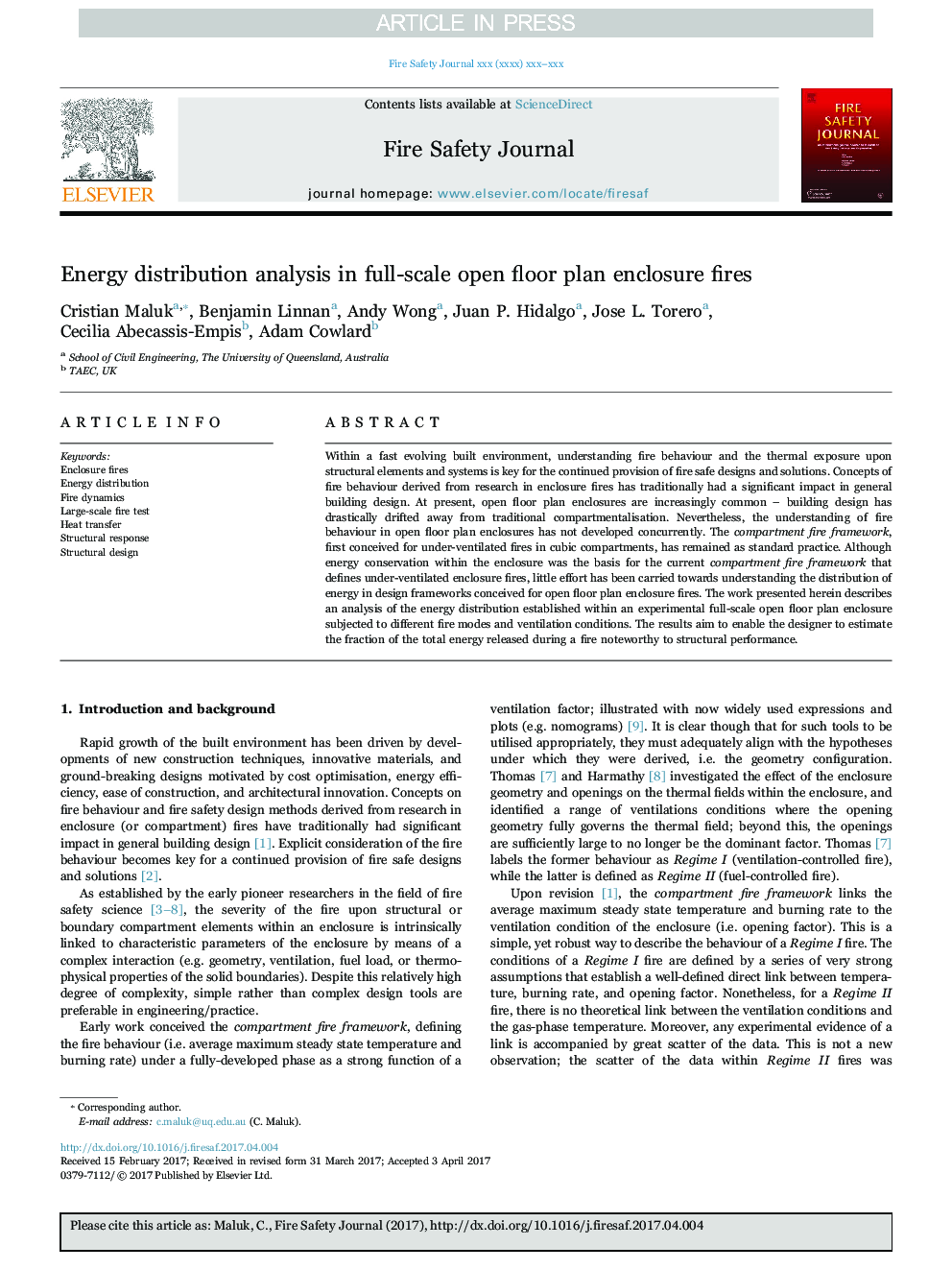| Article ID | Journal | Published Year | Pages | File Type |
|---|---|---|---|---|
| 4920924 | Fire Safety Journal | 2017 | 10 Pages |
Abstract
Within a fast evolving built environment, understanding fire behaviour and the thermal exposure upon structural elements and systems is key for the continued provision of fire safe designs and solutions. Concepts of fire behaviour derived from research in enclosure fires has traditionally had a significant impact in general building design. At present, open floor plan enclosures are increasingly common - building design has drastically drifted away from traditional compartmentalisation. Nevertheless, the understanding of fire behaviour in open floor plan enclosures has not developed concurrently. The compartment fire framework, first conceived for under-ventilated fires in cubic compartments, has remained as standard practice. Although energy conservation within the enclosure was the basis for the current compartment fire framework that defines under-ventilated enclosure fires, little effort has been carried towards understanding the distribution of energy in design frameworks conceived for open floor plan enclosure fires. The work presented herein describes an analysis of the energy distribution established within an experimental full-scale open floor plan enclosure subjected to different fire modes and ventilation conditions. The results aim to enable the designer to estimate the fraction of the total energy released during a fire noteworthy to structural performance.
Keywords
Related Topics
Physical Sciences and Engineering
Engineering
Civil and Structural Engineering
Authors
Cristian Maluk, Benjamin Linnan, Andy Wong, Juan P. Hidalgo, Jose L. Torero, Cecilia Abecassis-Empis, Adam Cowlard,
